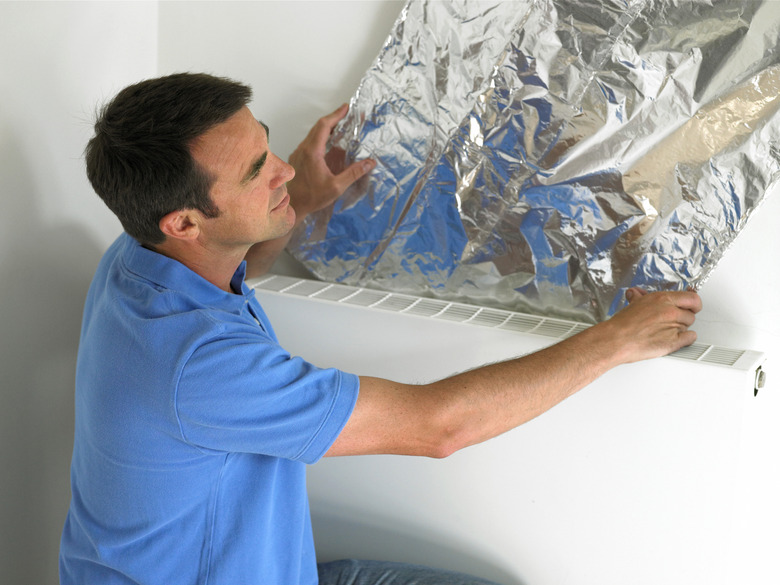Insulation R-13 Vs. R-19
Homeowners use insulation in the walls, ceilings and floors of their homes to eliminate drafts and to save money on heating and air conditioning costs. In the United States, about 50 to 70 percent of the energy used in homes goes for heating and cooling, according to the U.S. Department of Energy. Insulation has a thermal resistance value expressed as its R-value. Two of the most common insulation values are R-13 and R-19.
Basics
Heat normally flows from warmer areas to cooler areas. Insulation helps a home to resist heat gain from the sun into the house during warm weather months and helps keep heat from the furnace inside the house during the winter. Either way, insulation helps to make a home more comfortable and reduces heating and cooling costs by decreasing this flow of heat. When choosing insulation, it helps to know the difference between the commonly used R-13 and R-19 insulation.
R-Value
The R-value of insulation indicates its thermal resistance to the flow of heat. Higher numbers indicate insulation that is more effective. Thermal values range from a low of R-4 to a high of R-45. The label on insulation gives its R-value. However, the R-value of insulation also depends on proper installation to avoid compressing it. Compressing insulation lowers its R-value.
R-13
The U.S. Department of Energy gives R-13 insulation a designation of "good" for use in walls in southern regions of the country. In addition, you can use R-13 insulation in the floors of homes in those parts of the country as well as to insulate the basement walls of homes in any region of the nation, although the agency does rate R-19 as better for basement walls in northern areas.
R-19
Although the U.S. Department of Energy rates R-13 insulation as "good" for use in walls in southern areas of the country, it rates R-19 insulation higher, designating it as "great." That is because R-19 insulation provides more thermal insulation than R-13 does. Moreover, it rates the R-19 insulation as "good" for use in walls in northern regions while not recommending the use of R-13 in walls in those colder regions.
